- Call us: 01444 237070
- Contact Us
- Stores
- Sign In / Register
-
- Back
- Used Cameras
- Used Accessories
- Used Lenses
- Used Video
- Used Film Equipment
- Used Stock Alert
- Used Blank Test
- Sell or Part Exchange
- Used Clearance
- Recently Added Used Equipment
- Park Picks
- All Used Black Friday Deals
- Faulty
- Trade-In
- Blog
- New in
- Call us
- Contact us
- Stores
- Sign in
- Categories
- Tips & Inspiration
- Reviews
- News
- Events
- Features
- Buying Guides
- Competitions
Nikon D5 And Nikon D500 Review First Impressions

Way back in 2007, I was delighted to be able to attend the launch of a truly ground breaking camera – the Nikon D3. The D3 ushered in a new world of full frame high performance in all conditions, and was joined by its APS-C (DX) cousin - the D300.
So, you can imagine how pleased I was to be invited to a one-to-one session on the new Nikon D5 DSLR and its DX relation - the Nikon D500.
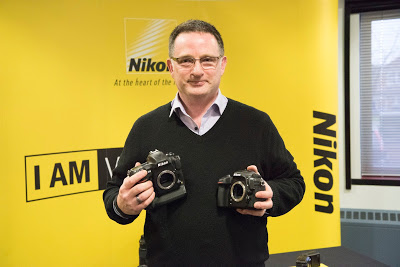
When the D3 was launched it set new standards for image quality in low light conditions, with exceptional high ISO capability. The D300 inherited much of the D3 technology, but in a more compact body and with a DX sensor. The D3 went on to become a superb professional tool, and I used this successfully for a number of years shooting Premier League football all around the UK. The combination of quick and reliable AF, excellent low light performance with clean ISO 6400 images, and excellent metering, were great for fast action.
The D300 was the camera of choice for many professionals too, as well as semi-pros and enthusiasts. The ability to bolt on the MB-D10 battery pack fitted with AA batteries and fire at 8 frames per second made the D300 a great option for action, aviation, and wildlife photography – though without the excellent high ISO performance of the D3, ISO 3200 was a realistic maximum.
Now nearly 9 years on, Nikon have announced the D5 and D500 – of course we have had the Nikon D4 and Nikon D4S after the D3, but the D500 is really the replacement for the D300/300S, as Nikon have produced a series of excellent cameras in the DX format (the Nikon D7000, Nikon D7100, and Nikon D7200) but none really replaced the D300.
Nikon D5 Features
Straight away, the Nikon D5 camera feels right in your hand. It’s a big unit but handles quite beautifully. The movement of the ISO control to a button near the shutter release is a good one if you use this control a lot, but the addition of a joystick (2 actually – one for horizontal and one for vertical operation) really speeds up image review and focus point selection etc
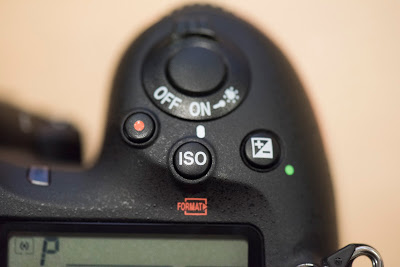 .
.
The D5 offers a higher frame rate that the D3/D4/D4S at 12fps with full AF and metering for each frame. The viewfinder image remains totally useable during burst shooting, due to clever reengineering of the mirror assembly. The shutter is really quite quiet and vibration free.
The viewfinder offers a superb view of your subject and the new 153 point AF system covers a large proportion of the frame (30% more than the D4S). My brief tests indicate that the AF acquisition is significantly faster than any camera I have ever tried, and the system was able to lock on easily in conditions where the subject can barely be made out!
The D5 then, clearly offers a significant leap forward in autofocus, and - reviewing images on screen and sample images - in high ISO performance. ISO 51,200 is simply no problem for the D5, and will give you a great image with little noise. Go higher, and noise becomes more visible with ISO 102,400 and 204,800 still producing an image suitable for most uses. Go higher than this, and post-capture noise reduction should yield a good result. Obviously this was a pre-production camera and final specification and image quality will be even better, but the signs are certainly very good.
Nikon D500 Features
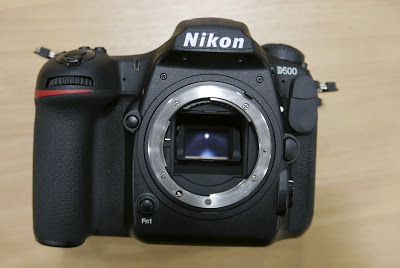
Now moving to the Nikon D500 specs. The Nikon D500 camera has been long-awaited by large numbers of enthusiast photographers – me included! The D300 was great in its day, but as technology has moved on, high ISO performance and frame rate offered by its rivals outstripped the D300. The D7000 with 16MP, the D7100, and the latest D7200 with 24MP are all great cameras – with the D7200 in particular offering excellent AF and improved frame rate and buffer size. The D500 however, takes this to a whole new level with a 10fps frame rate (with AF and metering) and a huge buffer, taking advantage of the ultra-high data transfer rate of XQD card technology.
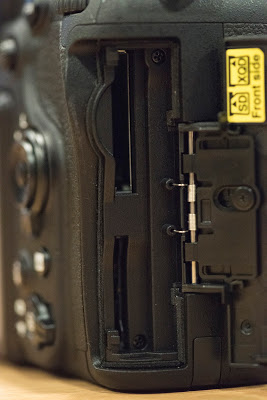
The Nikon D500 DSLR offers virtually all the technology of the D5 in a more compact package and with a DX format 20.2MP sensor. The D500 is a compact camera compared to the D5 and Nikon D810 for instance, but immediately feels like a solid and professional model when you pick it up. The optical viewfinder has to be the best on any current camera, with a ‘full frame’ like view, and poses no problems for glasses wearers to see the whole image area and information areas.
The AF system from the D5 is not scaled down for the DX format, but covers the same physical area – this means AF point coverage extends almost to the edge on both sides, and a little further to the top and bottom. This makes AF acquisition of off-centre subjects easy, and bodes well for focus tracking of difficult subjects such as fast moving birds or aircraft.
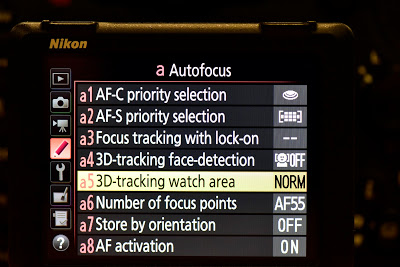
The AF was extremely fast on both the D5 and D500 – certainly faster than on any camera I have ever tried – and the -4EV sensitivity seemed to make a huge difference in low-light focusing capability. Both cameras offer a fantastic 15 focus points (including 5 cross sensors) when using lenses with effective maximum apertures of f8. Auto AF Fine-Tune is a really superb feature, as anyone who has had to set up all their lenses for other cameras will agree.
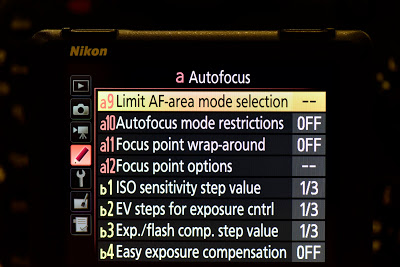
As with the D5, the fast moving mirror allows for an excellent view of the subject when the camera is firing, with minimal blackout. The D500 also offers an articulated rear LCD screen (not seen on the D5). This is also touchscreen-enabled for fast playback and zooming in and out of images. The touchscreen can also be used in live-view photography and video for selecting focus points etc.
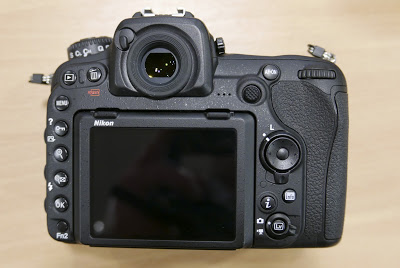
The D500 offers its maximum frame rate without the need for an additional battery pack, though one will be available for extended shooting time and the convenience of a vertical shutter release for portrait format shooting.
It has built in Wi-Fi, with easy low-power connection to your smart device for image upload via the Nikon Snapbridge app. The rear LCD screen for both models is greatly upgraded from the current range, and offers touchscreen capability for image playback and live-view shooting – a great and convenient feature.
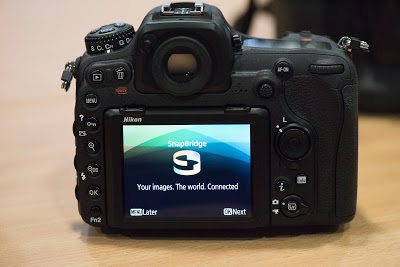
Nikon D5 And Nikon D500 Conclusions
So, overall Nikon has produced two stunning models – both fully capable of professional use in the harshest of conditions and in the most challenging low light situations.
D300 and D7XXX-series owners will be seriously tempted by the many improvements of the D500 – mainly the vastly improved AF system, frame rate, and buffer. For the wildlife or aviation photographer, the D500 - perhaps paired with the superb Nikon 200-500mm f/5.6E ED VR lens - would be a terrific combination.
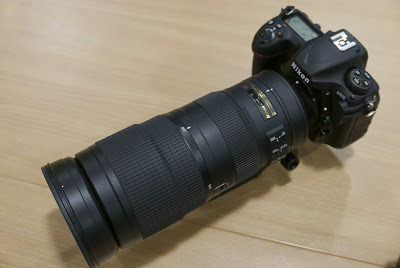
The D5 represents the pinnacle of full frame DSLR performance, with exceptional low light capability and all features at the cutting edge of technology.
Both cameras offering 20.2MP sensors is a sensible compromise, allowing for fast frame rates, extended sequence shooting, and easy image management. The approximately 60MB files produced are much easier to process than higher resolution files produced by the D810, which is very welcome.
So, Nikon have a couple of winners on their hands. Now, how do you get one into your hands? Easy! Pre-order your Nikon D5 or Nikon D500 from Park Cameras of course!.. Just call 01444 23 70 70 or email sales@parkcameras.com and we will be happy to be help you.
If you found this article interesting, you might like to view our related articles:
Nikon D5 vs Nikon D4S Comparison Review
New Nikon Lenses Announced
New Nikon D7200 Announced!
Share this post:
By Park Cameras on 15/02/2016

Trade in your old equipment
Fast and easy trade in service ensures your old gear is collected efficiently and you are paid quickly! It's very simple to trade in your unwanted photography gear. Just head over to our dedicated Sell or Part Exchange page, fill out the details, and we'll get back to you with an offer for your old gear. Take the cash, or put it towards the cost of your new gear. It's up to you! Find out more
sign up to the newsletter
Keep up to date on the latest photography news, events and offers. Sign up now
